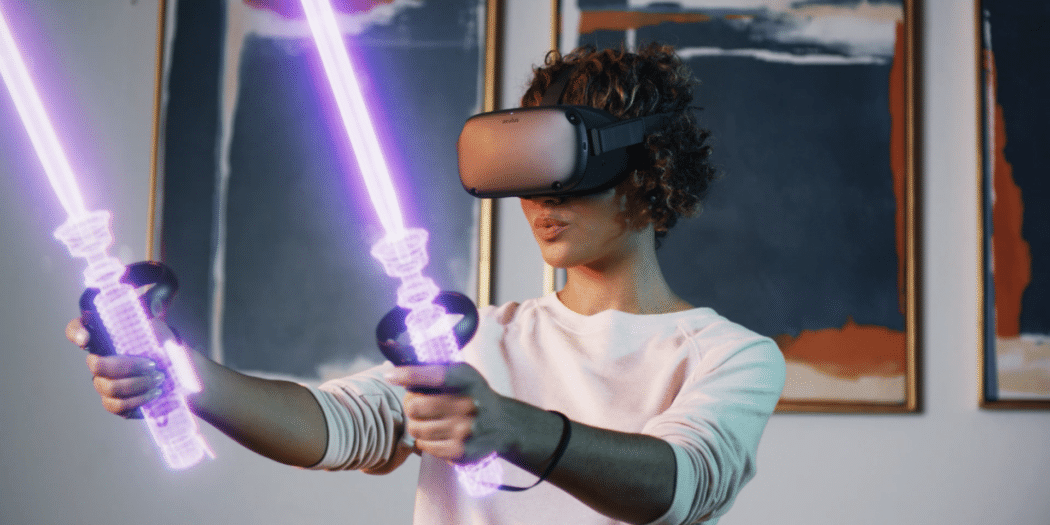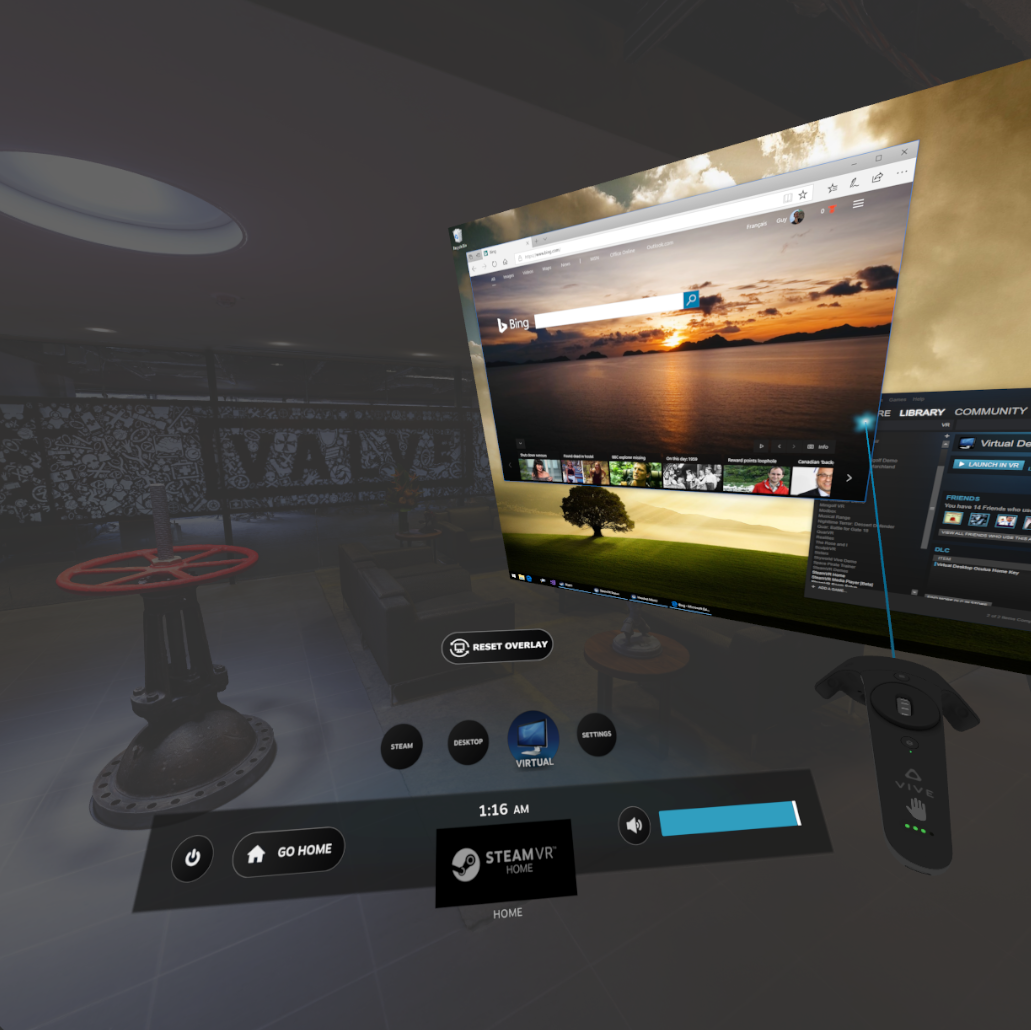

- #VR DESKTOP STEAMVR UPGRADE#
- #VR DESKTOP STEAMVR PORTABLE#
- #VR DESKTOP STEAMVR SOFTWARE#
- #VR DESKTOP STEAMVR PC#
Advertisementįurther Reading Steam Deck is Valve’s Switch-like portable PC, starting at $399 this December"These are some really interesting debug commands that throwing out there without encryption," Lynch says incredulously at the end of his report. Valve representatives did not immediately respond to Ars Technica's questions about the code-named Deckard device.

#VR DESKTOP STEAMVR UPGRADE#
Neither Lynch's report nor any of Ars' reporting has dug up any hint of Valve developing an upgrade for existing Index headsets through the front-trunk ("frunk") port on its face. They suggest that Valve is moving in a similar direction for whatever shape its next headset may take. Ars' sources point to public documents filed by companies like Facebook about the future of VR optics technology, which involve lenses that can be closer to a user's face-and offer better performance, better weight distribution, and more comfortable virtual movement. Lynch's video tries to connect the dots of prior patent filings about what may come in a future Valve VR headset model, and in at least one respect, his report is on the right track: updated optics. The sources also suggest Valve previously had trouble getting any form of inside-out tracking to match the performance of Oculus Quest, and the company brought on at least one outside firm to work on a competitive option. Such a system's efficiency could very well have changed in the time since Ars heard these reports. The other revolved around a built-in processor à la Oculus Quest with aspirations to ditch external tracking boxes and adopt Quest-like "inside-out tracking."
#VR DESKTOP STEAMVR PC#
During this preproduction phase, one prototype concept more closely resembled the Valve Index in terms of requiring some kind of connection to a PC and the existing SteamVR Tracking Boxes. Sources have previously told Ars Technica that Valve had at least two VR headset design concepts in the works, and in the concept stage, they diverged. Multiple VR concepts had been in the works Perhaps the most tantalizing mention of "Deckard" came from a string that Lynch discovered in a SteamVR Linux ARM binary, which hints to, but doesn't outright confirm, some form of processing built into a new Valve VR headset-as opposed to sending calls to a connected system like a gaming PC. However, his speculation about this doesn't necessarily confirm anything about an upcoming wireless Valve VR system, since that speed rating matches the Wi-Fi 6 controller found in Oculus Quest 2 headsets. Lynch points to a DLL that can be found in public SteamVR filesets, which currently includes calls about 160MHz wireless signals.
#VR DESKTOP STEAMVR SOFTWARE#
The word "standalone" happens to describe Facebook's Oculus Quest platform, which can either wirelessly connect to a powerful PC or run software using its own weaker, built-in hardware. These options, dubbed "prism" and "standalone system layer," have yet to be activated in meaningful ways, so their names and meaning remain a matter of speculation. The latter term, "standalone," implies that the hardware might work all by itself-as opposed to, say, being plugged into a computer or tracked by Valve's unwieldy SteamVR Tracking Boxes. The information gleaned by Lynch points to multiple iterations of this new code-named headset, including an updated "proof of concept" version referenced this June, along with the ability to activate a "Valve internal menu" that brings up two new SteamVR menu options. Ars can confirm the legitimacy of "Deckard" as a code-named device worked on inside of Valve's headquarters. The tip came in the form of a device code-named "Deckard," which is mentioned in SteamVR's publicly available branches from as far back as January. This week's information roundup comes courtesy of VR industry reporter and YouTube channel host Brad Lynch, who received a tip after tracking months of Valve patent applications. Sources familiar with matters at Valve have confirmed to Ars that information in the wild is legitimate-at least in terms of products being made within Valve's headquarters, even if those products don't ultimately see retail launches. What's in the future for VR headsets made by Valve, which launched the pricey, bulky, and impressive Valve Index in August 2019? The best information in the wild right now seems to be coming from Valve itself: data-mining discoveries and patent applications are adding up to something that looks like a brand-new Valve VR system with some form of built-in wireless functionality.


 0 kommentar(er)
0 kommentar(er)
